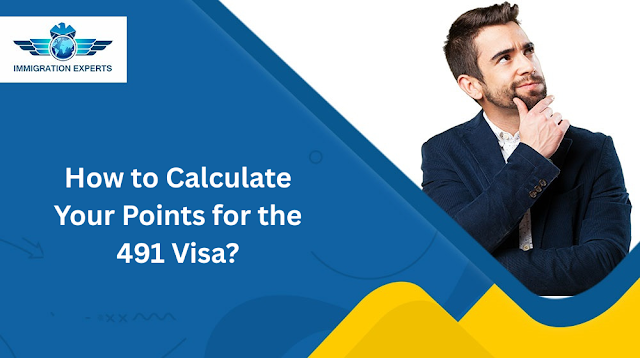A Step-by-Step Guide to the Australia Family Migration Process
Australia is a land of vast opportunities, rich culture, and world-class living standards—making it a dream destination for many. Whether you’re already in Australia or planning to join your loved ones Down Under, the Australia Family Migration Process can be a pathway to reunification and a brighter future. But like any immigration system, it can feel overwhelming at first.
In this comprehensive guide, we’ll break down the process, eligibility, visa categories, timelines, and tips to help you successfully navigate the Australian Family Migration system. Let’s get started!
What is the Family Migration Program?
Australia’s Family Migration Program allows eligible Australian citizens, permanent residents, or eligible New Zealand citizens to sponsor close family members to live in Australia permanently. It is one of the four key streams of the Australian migration system (the others being Skilled, Business, and Humanitarian).
The Family Migration stream includes categories such as:
- Partner visas
- Parent visas
- Child visas
- Other family visas (e.g., for carers or remaining relatives)
Step 1: Understand Your Eligibility
Before diving into the paperwork, it’s important to identify:
- Your relationship with the sponsor
- The sponsor’s immigration status
- The visa subclass applicable to your situation
The sponsor must be either:
- An Australian citizen
- An Australian permanent resident
- An eligible New Zealand citizen
Depending on your relationship, you’ll apply for a specific visa subclass.
Step 2: Choose the Right Visa Category
Here’s a breakdown of the most common family visa types:
1. Partner Visas (Subclass 820/801 and Subclass 309/100)
For spouses or de facto partners of Australian citizens or residents.
- Onshore: Subclass 820 (temporary) → Subclass 801 (permanent)
- Offshore: Subclass 309 (temporary) → Subclass 100 (permanent)
✅ You must be in a genuine and ongoing relationship.
2. Parent Visas (Subclass 103, 804, 143, 864)
For parents of settled Australian citizens or residents.
- Contributory Parent Visas (143/864): Faster but high application cost
- Non-Contributory Visas (103/804): Cheaper but wait times of up to 30 years
3. Child Visas (Subclass 101, 802)
For dependent children of an Australian citizen or resident.
- Subclass 101 (offshore)
- Subclass 802 (onshore)
✅ Child must be under 25, dependent, and not married.
4. Other Family Visas
- Carer Visa (Subclass 116/836): For those needing long-term care
- Remaining Relative Visa (Subclass 115/835): For those with no close family outside Australia
- Aged Dependent Relative Visa (114/838)
Each visa type has its own requirements, documentation, and waiting period.
Step 3: Gather Required Documentation
Visa applications are documentation-heavy. Here's what you generally need:
- Proof of identity (passports, birth certificates)
- Proof of relationship (marriage certificates, communication history, photos)
- Character documents (police clearance, Form 80)
- Medical examinations
- Evidence of financial capacity or support (if applicable)
- Sponsorship documents
Tip: Double-check the official Department of Home Affairs website for the latest requirements.
Step 4: Submit Your Application
Applications can typically be lodged:
- Online through the ImmiAccount portal
- Paper-based for certain visas (though this is rare)
You will need to pay the visa application charge (VAC) which varies by visa type.
Partner visa example:
- Initial cost: AUD $8,850 (as of 2025)
- Additional costs: Medical, biometrics, translations, etc.
Must Read: ImmiAccount Update Now: Simplify Your Parent Visa Journey
Step 5: Wait for Processing
Processing times vary widely. Approximate timelines as of 2025:
- Partner visas: 12–24 months
- Parent visas:
- Contributory: 3–6 years
- Non-Contributory: 20–30 years
- Child visas: 6–12 months
- Other family visas: Often several years
Factors influencing wait times:
- Application completeness
- Demand for the visa type
- Background checks and medical clearance
Patience is key—especially for Parent and Remaining Relative visas.
Step 6: Visa Outcome & Arrival in Australia
Once your visa is granted:
- You may be given a deadline to enter Australia
- You'll receive a Visa Grant Notice with conditions and expiry
- Make sure to keep health insurance and update your address
Depending on the visa, you'll have immediate or eventual access to:
- Medicare (Australia's public healthcare)
- Work rights
- Education and welfare benefits
Bonus Tips for a Smooth Process
- Start early – applications can take months or years
- Be honest and thorough – inconsistencies may delay or derail your application
- Seek legal advice for complex cases or refusals
- Keep backups of every document and submission
- Stay updated – immigration rules and fees change frequently
Final Thoughts:
Migrating to Australia under the Family stream is an emotional and life-changing journey. Whether you’re reuniting with your spouse, sponsoring your parents, or bringing your children home, the process is deeply rewarding—if sometimes complex.
By following this step-by-step guide and staying informed, you'll be in a much better position to manage expectations, avoid common pitfalls, and achieve a successful outcome.
After all, there’s no place like home—especially when it’s shared with family.
Need professional help or more personalized advice?
Turn to Apical Immigration Experts — your trusted partner for reliable and tailored immigration solutions.




Comments
Post a Comment